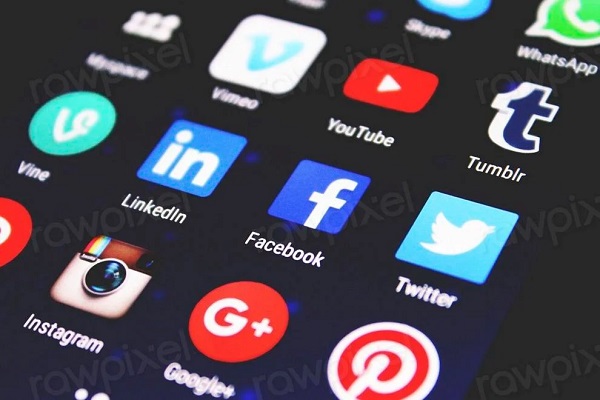Business
Government laws designed to rescue Canadian media have done the opposite

From the MacDonald-Laurier Institute
This article first appeared as the cover story to our September 2023 issue of Inside Policy. You can download the full issue here.
By Peter Menzies, October 4, 2023
The federal government has made a regulatory mess with wrongheaded legislation targeting digital media content.
Few things are more fundamental to a nation’s economic prosperity and social cohesion than a robust communications framework.
Canada has its challenges in terms of rural and northern internet and mobile connectivity, but the nation’s overall communications mainframe is, by most international measures, in good shape. The rest of the story involving what gets carried on the mainframe (i.e., the actual content) isn’t as pretty. In fact, two recent communications policy initiatives proposed by the federal government have put tens of thousands of jobs at risk in the creative and news industries.
Money goes where it is likely to generate profit, and if some key arteries aren’t unclogged quickly, the flow of communications investment dollars in Canada could seize up. Worse, the future of what has been a thriving creative economy, driven by independent content creators, is now uncertain.
Meanwhile, the news industry is on the cusp of becoming permanently reliant on government subsidies – a dependency that’s certain to undermine the public’s already wavering trust in its independence.
But first, the good news. While measures vary by source and date, Canada consistently ranks among the world’s top 20 nations when it comes to fixed broadband connectivity, and as high as No. 1 in the world when it comes to mobile internet capacity. Given that most of nations in the top ten for broadband connectivity are smaller in landmass than Prince Edward Island, this is a considerable achievement for a country the size of Canada. This connectivity, however, has come at a premium – consumer in this country are historically among those paying the highest rates anywhere in the world, particularly when it comes to mobile plans. Costs to consumers remain high but have been trending downward in recent years as carriers shift strategic priorities from acquiring new consumers to retaining existing ones.
Far more challenging is a regulatory environment that is less than friendly when it comes to attracting private investment. The Canadian Radio-television and Telecommunications Commission (CRTC) has been risk-averse in its dealings with Mobile Virtual Network Operators (MVNOs) and smaller Internet Service Providers (ISPs) looking for competitive access rates to incumbent networks. Still, competition is one area that appears to be a priority for the CRTC. The regulator’s new chair, Vicky Eatrides, has a background in competition policy; a new vice chair, Adam Scott, is thoroughly familiar with the Telecom industrial framework; and the new Ontario Regional Commissioner, Bram Abramson, has experience as a regulatory officer for a smaller telco. (Abramson’s former employer, TekSavvy Solutions, recently waved the white flag in its efforts to compete in the Canadian market and put itself up for sale.)
Now the bad news – and, fair warning, there’s a lot of it.
Canada is aggressively regulating the internet – not in priority areas such as privacy, algorithms and data collection, but in terms of its content and its users’ freedom of navigation. The Online Streaming Act (Bill C-11) came into force in the spring, amending the Broadcasting Act to define the internet’s audio and video content as “broadcasting” and, as such, placing all this content under the authority of the CRTC. The goals remain the same as they did during the broadcast radio and cable television world of the early 1990s: the funding of certified TV and film properties, ensuring Canadian content (CanCon) gets priority over foreign programming and ensuring designated groups – BIPOC and LGBTQ2S, among other acronyms – and official language minorities are represented. How exactly the CRTC intends to achieve this without disrupting what has been a booming decade for film and television production in a freewheeling global market remains to be seen. As does how it will give its supply-managed content priority without imposing economic harm on the 100,000 Canadians who earn a living in the unlicensed, uncertified world of YouTube and other major streaming platforms.
While the CRTC has promised to provide at least preliminary answers to these questions by the end of next year, years of regulatory haggling and court challenges await and the regulator’s reputation for the timely resolution of matters is spotty at best. As of September 22, for instance, it still hadn’t dealt with a cabinet order to review its CBC licensing decision; a decision which, itself, which took 18 months for the regulator to reach (following a January 2021 hearing that was held three years after the term of the CBC’s previous license had expired). Regulatory sloth of this nature on a routine matter does not inspire much optimism for the expedient handling of the far more complex issue of online streaming.
Indeed, the burden of the Online Streaming Act has already overwhelmed the CRTC’s administrative capacities. In August, it autorenewed the licenses of 343 television channels, discretionary services, and cable and satellite services for two to three years each. It subsequently announced it wouldn’t be dealing with any radio matters at all for “at least” two years. It even nervously punted a demand for the cancellation of Fox News’ Canadian carriage into the future by declaring it necessary to re-do the entire framework involving cable carriage of foreign television channels. It has clearly signaled that it plans to manage nothing other than telecom and Online Streaming Act issues for years to come. Everything else is on hold until such time comes to initiate a catch-up process that, in turn, will itself take years to clear the logjam. All this at a time of significant disruption that demands corporate and regulatory nimbleness.
But even what appears to be catastrophic regulatory arrest pales in comparison to the impact of the federal government’s second significant piece of new internet legislation: the Online News Act. Rarely has legislation designed to assist a sector – news production – been so poorly constructed that it has managed to make everything worse for everyone involved.
Based on the unproven premise that Big Tech companies were profiting from “stealing” content from news organizations, the Act was designed to force Meta (Facebook’s parent company) and Google to redistribute their considerable advertising revenue to those who used to receive the lion’s share of this revenue – newspapers and broadcasters. From the beginning, Meta indicated that the premise and the cost of the legislation, unless amended, would force it to cease the carriage of links to news stories and suspend its existing support programs for Canadian journalism.
The government and the news industry lobbyists who backed the bill grossly overestimated their economic value to Meta and insisted the tech giant was bluffing. Last week, however, Brian Myles, Director of Le Devoir, told an online panel hosted by the Canadian Journalism Foundation that it was clear Meta wasn’t bluffing and, going forward, news organizations would have to adapt to its exit from the market and the considerable financial impact it will have on their industry. He nevertheless held out hope that a rapprochement of some kind might still be possible with Google.
Like Meta, Google has indicated that it, too, will suspend both news linkage and its current partnerships with Canadian news organizations, unless the federal government can provide more economically acceptable options than what it has heretofore offered. As much financial harm as Meta’s departure will cause, there is consensus that Google’s departure – if it occurs – would be a disaster on a nuclear scale.
Even if a deal is reached, the best the news industry can hope for is that Google’s financial concessions will offset a portion of the losses suffered from losing access to Facebook, Instagram and Threads (among other Meta properties). Any money that can be squeezed out of an agreement with Google would be meaningful but a far cry from the hundreds of millions the industry was dreaming of a year ago. The largest recipients of any such windfall, of course, will be those who least need it – namely CBC and Bellmedia.
The bottom line is that, following passage the Online News Act, there will be less revenue for Canadian news organizations than there was just a few months ago. As a result, publishers are pleading for “temporary” measures such as the Journalism Labour Tax Credit and Local Journalism Initiative to be not just extended but enhanced. Up to 35 percent of legacy newsrooms costs would be covered by the federal government while, without Facebook, it will be near impossible for local news innovators outside of the legacy bubble to build audiences.
Next up is an anticipated Online Harms Act, designed to control “lawful but awful” speech through a government-appointed Digital Safety Commissioner. Expect more policy mayhem in the months to come.
Peter Menzies is a senior fellow at MLI and a former vice-chair of the CRTC.
Business
103 Conflicts and Counting Unprecedented Ethics Web of Prime Minister Mark Carney


 Dan Knight
Dan Knight
Brookfield. The PMO. Eurasia Group. One Green Agenda, Billions in Conflicts.
Well, it finally happened. After months of dodging questions and hiding behind vague platitudes about “climate leadership,” Prime Minister Mark Carney’s official conflict-of-interest screen has been released by the Ethics Commissioner—and what it reveals is nothing short of staggering. Not five entities. Not a dozen. One hundred and three. That’s how many corporate and financial interests Carney has quietly acknowledged are too conflicted for him to touch.
At the center of this web? Brookfield Asset Management, the $1 trillion global investment firm where Carney was Vice-Chair before walking straight into Canada’s top political office. The very same Brookfield that owns energy projects, pipelines, nuclear companies, real estate empires, carbon offset schemes you name it, they’ve got a piece of it. And now, they’ve got a former executive running the country.
We’re told it’s all perfectly legal. We’re told Carney has “recused himself.” But what this disclosure actually shows is something much bigger: a government captured by finance, a prime minister with deep, ongoing entanglements in the very sectors his policies now enrich, and a climate agenda that’s beginning to look a whole lot like a money-printing operation for the global elite.
The deeper one digs into Prime Minister Mark Carney’s ethics disclosure, the clearer the picture becomes: what’s been framed as a climate leadership story is, in reality, a tightly wound web of commercial interest wrapped in green rhetoric. The 103-entity conflict-of-interest screen, ostensibly a shield against impropriety, instead serves as a road map of how thoroughly Canada’s top political office is entangled in the global green finance complex centered around Brookfield Asset Management.
As of Q1 2025, Brookfield reports $125 billion in assets under management (AUM) in its Renewable Power & Transition segment, a figure representing 12.5% of its overall $1 trillion portfolio. This segment alone encompasses most of the entities on Carney’s ethics screen: nearly 60 out of 103, even after accounting for duplicates. These aren’t passive holdings they’re the very projects, technologies, and subsidy-eligible vehicles Carney once oversaw directly as vice-chair of Brookfield and as co-lead of its $15 billion Global Transition Fund.
Brookfield’s renewables portfolio is vast: over 41.8 GW in installed capacity globally across wind, solar, hydro, and storage, with a 200+ GW development pipeline. A significant portion of this is owned or operated through the same SPVs and subsidiaries now appearing on the conflict list. Notable entries include Scout Clean Energy ($1B), Urban Grid ($650M), and Standard Solar ($540M). These acquisitions were all completed while Carney was at Brookfield, and they continue to generate revenue from U.S. and Canadian subsidy frameworks programs now shaped by the very government he leads.
Brookfield Renewable Partners L.P., the sector flagship, holds approximately $95 billion in total assets and generated $315 million in funds from operations in Q1 2025 alone. The firm is planning to add another 8 GW in capacity this year expansion that is, in part, subsidized through the same green transition policies Carney has promoted both in office and as a climate finance advocate.
The line between public and private interest blurs even further when examining the entities categorized under the “energy transition” banner; nuclear, CCS (carbon capture and storage), and so-called e-fuels. Carney’s screen includes Brookfield’s recent $8 billion acquisition of Westinghouse Electric Company, a nuclear power behemoth now positioned to benefit from Canada’s federal nuclear incentives and SMR (small modular reactor) program. Other flagged investments like Entropy and Carbon TerraVault fall directly into carbon credit and offset schemes—markets heavily influenced by federal regulation and incentive design.
Let’s stop pretending. What we’re witnessing here isn’t just conflict of interest, it’s a complete merger of state power and corporate ambition, all dressed up in the language of moral urgency. The Ethics Commissioner’s so-called “screen” for Mark Carney? It’s a joke. A checklist. A bureaucratic fig leaf meant to reassure you that everything’s above board. But it’s not.
Because here’s the truth: Carney is policing himself. He’s supposed to recuse himself from decisions that benefit the 103 entities he’s tied to many of which he helped create or oversee as Vice-Chair of Brookfield Asset Management. But who decides if he’s in conflict? He does. Or more accurately, the PMO does. The same PMO now drafting Dominion Barton-style focus groups to figure out how best to sell you the green grift. There’s no third-party oversight, no transparency on what’s actually in his so-called blind trust, and no disclosure of the carried interest he may still be entitled to from Brookfield’s billions in funds.
Meanwhile, the policy levers of government are being pulled in exactly the direction Brookfield bet on. Wind, solar, carbon capture, nuclear, every so-called “transition” sector that Brookfield spent years buying into is now flush with green subsidies, ESG guarantees, and taxpayer-backed investment shields. This isn’t the free market at work, it’s a strategic payoff, engineered by someone who’s now running one of the most powerful G7 economies.
And again, none of it is illegal. That’s the most damning part. Because legality isn’t the standard here. The standard is integrity, and that’s nowhere to be found. The scale of this overlap isn’t just large. It’s systemic. It’s built into the very foundation of the Carney government’s climate policy. The same man who structured these funds is now the man signing off on the policies that make them profitable.
Diana Fox Carney’s Quiet Role in the Climate Cash Machine
And just when you thought the web of influence stopped at the Prime Minister himself, along comes Diana Fox Carney, economist, climate consultant, and spouse of the most well-connected man in Canadian politics. While Mark Carney’s direct financial entanglements with Brookfield Asset Management are now public record, his wife’s career trajectory paints an equally troubling picture of how the same elite networks driving Canada’s green spending are profiting in parallel, behind the curtain.
Diana Fox Carney currently holds a senior advisory role at Eurasia Group, the New York-based geopolitical risk consultancy that’s become a quiet powerhouse in shaping global ESG narratives. It’s also the same firm where Gerald Butts—Trudeau’s longtime fixer and architect of the federal climate playbook—now serves as vice chair. Add in former journalist Evan Solomon and even Conservative stalwart John Baird, and you’ve got a bipartisan consultancy stacked with Canadian political operators. Convenient? Maybe. Coordinated? You decide.
And what has this firm staffed with Liberal-era insiders received in return? Millions in untendered government contracts, including a $446,210 deal from Natural Resources Canada in 2024 for vaguely defined “geopolitical research.” That’s nearly half a million dollars in taxpayer money handed out without competition, to a firm employing the sitting Prime Minister’s wife—and his former colleagues. Just coincidence, right?
But Eurasia Group is only the start. Diana’s reach extends far beyond advisory calls. She’s connected to:
- BeyondNetZero, a climate equity fund backed by U.S. private capital giant General Atlantic.
- Helios CLEAR, investing in African climate “resilience.”
- ClientEarth U.S. and the Shell Foundation, both pushing aggressive environmental litigation and policy influence.
- Canada 2020, a Trudeau-aligned think tank that’s pocketed over $1 million in federal grants.
Throw in indirect ties to Gates Foundation funding, Save the Children, and research networks influencing African agriculture, and you’re looking at a network of transnational climate consultants with deep, ongoing influence over the exact climate policies the federal government is now implementing under her husband’s leadership.
Now, legally, Diana is in the clear. She’s not a public office holder. But that’s the point. The rules weren’t designed for this new class of political operator—the dual-career globalist power couple, where one side signs the climate cheques while the other cashes them. No formal disclosure is required. No recusals. No transparency. Yet the influence is there. The access is there. The money is flowing.
Opposition Reaction: Pierre Poilievre Slams Carney’s Hidden Conflicts, Demands Real Transparency
Conservative Leader Pierre Poilievre wasted no time responding to the bombshell ethics screen showing Prime Minister Mark Carney is recusing himself from dealings with over 100 companies, many tied to his former employer, Brookfield Asset Management. In a pair of direct and widely shared posts, Poilievre accused Carney of concealing critical financial entanglements from voters during the 2025 election, and warned that the Liberal leader is now either positioned to profit from federal decisions or paralyzed from making them.
“Mark Carney must explain why he kept these conflicts secret from voters until after the election,” Poilievre wrote. “Now he will be in a position to profit from big decisions or will be forced to sit out those decisions altogether. Either way, Canadians will pay the price.”
In a second post earlier that morning, Poilievre challenged the credibility of Carney’s so-called blind trust, urging the Prime Minister to liquidate his holdings entirely and hand the cash to a trustee who can invest it without Carney’s knowledge or influence:
“Otherwise, he will always know how political decisions can affect his personal wealth.”
These statements mark the strongest opposition rebuke yet of the Carney government’s financial entanglements. Poilievre’s message echoes growing public criticism that the ethics screen is little more than window dressing, lacking third-party oversight, and that it fails to address indirect benefit through carried interest, deferred compensation, or spousal affiliations.
While Carney has claimed he is in full compliance with federal ethics laws, the fact that the disclosures were released only after the election is fueling outrage—not just among Conservatives but from broader accountability watchdogs. With over 100 entities flagged, many of them tied to green energy, infrastructure, and climate finance—the same sectors receiving billions in federal spending—the Conservative leader has positioned himself as the voice of those demanding a full forensic audit of the Prime Minister’s interests.
The message from the opposition is clear: if this were a Conservative leader, the media would be calling it a scandal. But because it’s Carney—the global banker, the climate envoy, the Liberal savior—the establishment is looking the other way. Poilievre’s Conservatives aren’t. And they’re turning this into a defining issue of integrity and accountability in Canadian politics.
Let’s Call This What It Is
This isn’t subtle. This isn’t nuanced. This is what a grift looks like—on paper, in public, in black and white. Over one hundred conflicts of interest tied directly to Mark Carney. Entire portfolios of foreign and domestic holdings, billions in green investments, shell companies in Bermuda—and that’s before we even get to his wife’s global consultancy work, advising firms that quietly gobble up federal contracts without a single public tender.
And here’s the thing: we weren’t told any of this during the election. There was no press conference, no headline, no public vetting of the sprawling web of corporate and climate interests now tied to the highest office in the country. Why? Because it would have compromised the Liberal grip on power. Because the last thing this party wanted Canadians to know was that their new leader wasn’t just a banker—but a banker with a boardroom’s worth of financial strings still attached.
Now imagine—just for a moment—if it had been Pierre Poilievre. Or Andrew Scheer. Or any Conservative leader with over a hundred screened entities, global finance ties, offshore SPVs, and a spouse employed by a company collecting millions in government money. The press would be in a frenzy. The CBC would be running specials. They’d be calling him compromised, unfit, a foreign agent.
But because it’s their guy—because it’s the Liberal elite’s banker-in-chief—we’re told it’s fine. It’s all above board. Move along, nothing to see here.
Nonsense. Absolute nonsense.
This is not leadership. This is ideological grifting at the highest level. The Liberal Party, once the party of national unity and democratic accountability, has become a hollowed-out machine for elite interests. They’re not liberals. They’re grifters—grifting for green subsidies, globalist contracts, and personal access to power. They have no principle left. Just consultants, contracts, and a taxpayer-funded narrative to keep the game going.
Enough. Canadians didn’t vote for this. They weren’t told the truth. And now the entire climate agenda, the whole “just transition,” looks more like a get-rich scheme for the political class than any serious public mission.
It’s time for an election. Time to clear house. Time to drain this toxic, green-glossed swamp once and for all.
Subscribe to The Opposition with Dan Knight
Invite your friends and earn rewards
Business
Most Canadians say retaliatory tariffs on American goods contribute to raising the price of essential goods at home

- 77 per cent say Canada’s tariffs on U.S. products increase the price of consumer goods
- 72 per cent say that their current tax bill hurts their standard of living
A new MEI-Ipsos poll published this morning reveals a clear disconnect between Ottawa’s high-tax, high-spending approach and Canadians’ level of satisfaction.
“Canadians are not on board with Ottawa’s fiscal path,” says Samantha Dagres, communications manager at the MEI. “From housing to trade policy, Canadians feel they’re being squeezed by a government that is increasingly an impediment to their standard of living.”
More than half of Canadians (54 per cent) say Ottawa is spending too much, while only six per cent think it is spending too little.
A majority (54 per cent) also do not believe federal dollars are being effectively allocated to address Canada’s most important issues, and a similar proportion (55 per cent) are dissatisfied with the transparency and accountability in the government’s spending practices.
As for their own tax bills, Canadians are equally skeptical. Two-thirds (67 per cent) say they pay too much income tax, and about half say they do not receive good value in return.
Provincial governments fared even worse. A majority of Canadians say they receive poor value for the taxes they pay provincially. In Quebec, nearly two-thirds (64 per cent) of respondents say they are not getting their money’s worth from the provincial government.
Not coincidentally, Quebecers face the highest marginal tax rates in North America.
On the question of Canada’s response to the U.S. trade dispute, nearly eight in 10 Canadians (77 per cent) agree that Ottawa’s retaliatory tariffs on American products are driving up the cost of everyday goods.
“Canadians understand that tariffs are just another form of taxation, and that they are the ones footing the bill for any political posturing,” adds Ms. Dagres. “Ottawa should favour unilateral tariff reduction and increased trade with other nations, as opposed to retaliatory tariffs that heap more costs onto Canadian consumers and businesses.”
On the issue of housing, 74 per cent of respondents believe that taxes on new construction contribute directly to unaffordability.
All of this dissatisfaction culminates in 72 per cent of Canadians saying their overall tax burden is reducing their standard of living.
“Taxpayers are not just ATMs for government – and if they are going to pay such exorbitant taxes, you’d think the least they could expect is good service in return,” says Ms. Dagres. “Canadians are increasingly distrustful of a government that believes every problem can be solved with higher taxes.”
A sample of 1,020 Canadians 18 years of age and older was polled between June 17 and 23, 2025. The results are accurate to within ± 3.8 percentage points, 19 times out of 20.
The results of the MEI-Ipsos poll are available here.
* * *
The MEI is an independent public policy think tank with offices in Montreal, Ottawa, and Calgary. Through its publications, media appearances, and advisory services to policymakers, the MEI stimulates public policy debate and reforms based on sound economics and entrepreneurship.
-

 Environment2 days ago
Environment2 days agoEPA releases report on chemtrails, climate manipulation
-

 Alberta2 days ago
Alberta2 days agoAlberta school boards required to meet new standards for school library materials with regard to sexual content
-

 Business2 days ago
Business2 days agoUN’s ‘Plastics Treaty’ Sports A Junk Science Wrapper
-

 Crime2 days ago
Crime2 days agoSweeping Boston Indictment Points to Vast Chinese Narco-Smuggling and Illegal Alien Labor Plot via Mexican Border
-

 Business1 day ago
Business1 day agoCBC six-figure salaries soar
-

 Business1 day ago
Business1 day agoTrump slaps Brazil with tariffs over social media censorship
-

 Business1 day ago
Business1 day agoTrump confirms 35% tariff on Canada, warns more could come
-

 National1 day ago
National1 day agoHow Long Will Mark Carney’s Post-Election Honeymoon Last? – Michelle Rempel Garner







